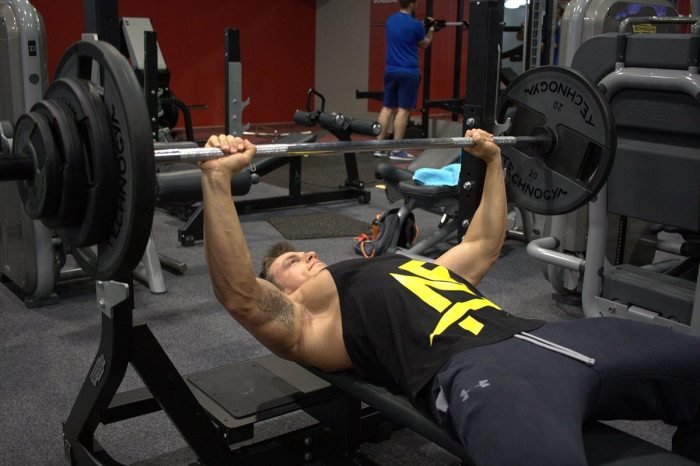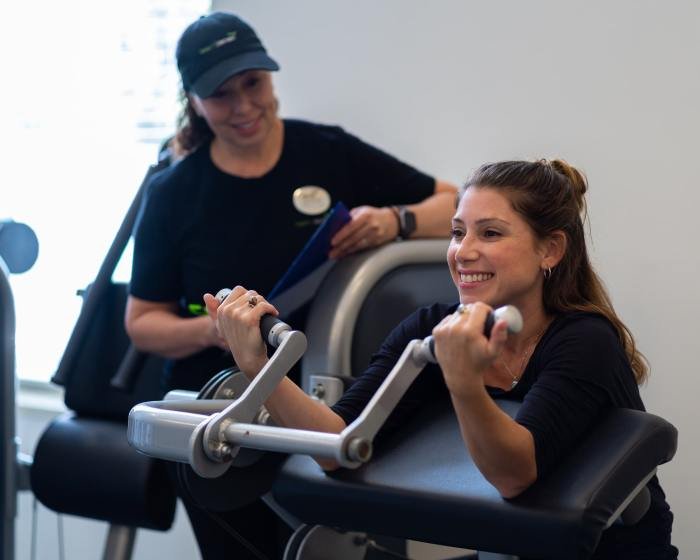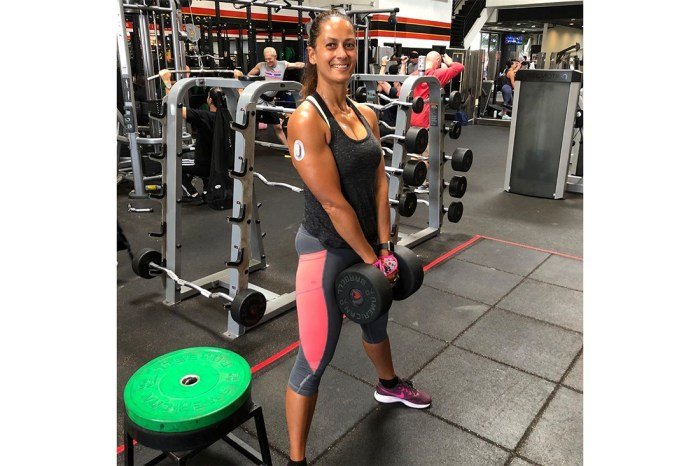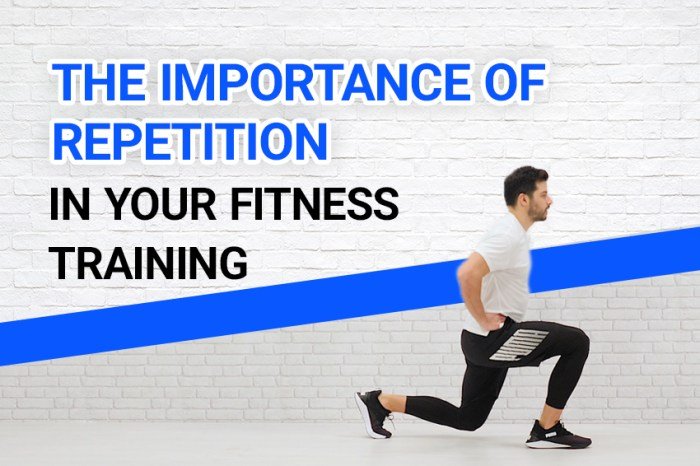What is a rep in fitness? It’s the fundamental unit of exercise, the single movement that forms the basis of building muscle, strength, and endurance. Each rep is a complete cycle of an exercise, from the starting position to the end, and back again.
It’s the repetition that makes the difference, challenging your muscles and pushing you towards your fitness goals.
From lifting weights to doing push-ups, reps are the foundation of countless exercises. Understanding the role of reps in fitness is crucial for achieving your fitness goals. Whether you’re aiming for muscle growth, weight loss, or improved cardiovascular health, the number of reps you perform plays a significant role in your progress.
This article will explore the concept of reps, delve into their importance in fitness, and guide you on how to utilize them effectively to maximize your results.
Definition of a Rep in Fitness

A rep, short for repetition, is a single complete execution of an exercise movement. It’s the fundamental building block of any workout routine, contributing to strength, endurance, and muscle growth.
Counting Reps
Reps are counted to track your progress and ensure you’re consistently challenging yourself. A successful rep involves performing the exercise with proper form and completing the full range of motion. This means starting in the initial position, moving through the entire intended movement, and returning to the starting position.
Examples of Reps in Different Exercises
- Bicep Curl:One rep involves bending your elbow, lifting the weight up towards your shoulder, and then lowering it back down to the starting position.
- Push-up:One rep consists of lowering your body down towards the ground until your chest touches the floor, then pushing yourself back up to the starting position.
- Squat:One rep involves lowering your body down until your thighs are parallel to the ground, then standing back up to the starting position.
- Deadlift:One rep involves lifting a barbell off the ground, standing up straight with the weight, and then lowering the barbell back down to the ground.
Importance of Reps in Fitness

Reps, or repetitions, are a fundamental element of any fitness routine. They represent the number of times you perform a specific exercise movement, and their impact on your fitness journey is substantial. Understanding the role of reps in building muscle mass, enhancing cardiovascular health, and achieving different fitness goals is crucial for maximizing your workout results.
Reps and Muscle Growth
The number of reps you perform directly influences muscle growth and strength development. Lifting weights for a higher number of reps with lighter weights promotes muscle hypertrophy, or muscle growth, by increasing the size and strength of your muscle fibers.
This is known as hypertrophy training.
“The more reps you do, the more your muscles will grow.”
In fitness, a rep, short for repetition, is a single performance of an exercise. Whether you’re aiming for a personal best or just starting out, staying injury-free is crucial. If you need immediate medical attention, consider reaching out to health first now urgent care for prompt and professional care.
This allows you to focus on your fitness goals with peace of mind, ensuring you can safely complete those reps and build strength over time.
On the other hand, performing fewer reps with heavier weights focuses on increasing muscle strength and power. This is known as strength training.
Reps and Cardiovascular Health, What is a rep in fitness
Reps also play a vital role in cardiovascular health. Performing exercises with a higher number of reps, especially in cardio exercises like running or cycling, improves your heart rate and blood flow. This strengthens your cardiovascular system, improves your endurance, and reduces your risk of heart disease.
“Regular cardiovascular exercise, including high-rep exercises, is crucial for a healthy heart.”
Reps and Fitness Goals
The number of reps you perform is directly linked to your specific fitness goals. For example, if you’re aiming for muscle gain, you’ll need to focus on a higher rep range (8-12 reps) with moderate weight. This will stimulate muscle hypertrophy and promote muscle growth.
- Weight Loss: High-rep exercises (15-20 reps) with moderate weight can help burn more calories and increase your metabolism, aiding in weight loss.
- Strength Gain: Lower rep ranges (3-5 reps) with heavier weights are ideal for building strength and power.
- Endurance: High-rep exercises (15-20 reps) with moderate weight can improve your endurance and stamina.
Rep Ranges and Their Benefits: What Is A Rep In Fitness

Different rep ranges are associated with specific fitness goals and result in different adaptations within the body. Understanding the benefits of each rep range allows you to tailor your workouts to achieve your desired outcomes, whether it’s building muscle, increasing strength, or improving endurance.
Rep Ranges and Their Corresponding Fitness Goals
The following table Artikels the typical rep ranges and their corresponding fitness goals:
| Rep Range | Fitness Goal |
|---|---|
| 1-5 reps | Maximal Strength |
| 6-12 reps | Hypertrophy (Muscle Growth) |
| 12-20 reps | Muscle Endurance |
| 20+ reps | Muscular Endurance and Fat Loss |
Benefits of Different Rep Ranges
Each rep range offers distinct benefits for your body:
1-5 Reps: Maximal Strength
This rep range focuses on lifting heavy weights for a low number of repetitions. This type of training stimulates the nervous system to recruit more muscle fibers, leading to increased strength and power.
“The body adapts to the demands placed upon it. By lifting heavy weights, you force your body to become stronger.”
A rep, short for repetition, is a single execution of an exercise in fitness. It’s the building block of a workout, and each rep helps you get stronger and more toned. Maintaining a healthy lifestyle, including fitness, is important for overall well-being.
If you’re struggling with mental health, organizations like highlands behavioral health colorado can provide support and guidance. Getting back to fitness, even with a single rep at a time, can be a positive step towards a healthier mind and body.
Examples of exercises suitable for this rep range include:
- Deadlifts
- Squats
- Bench Press
- Overhead Press
6-12 Reps: Hypertrophy (Muscle Growth)
This rep range is considered the “sweet spot” for muscle growth. It promotes hypertrophy by creating sufficient tension and metabolic stress to stimulate muscle protein synthesis.
“Muscle growth occurs when the body repairs and rebuilds muscle tissue after it has been broken down during exercise.”
Examples of exercises suitable for this rep range include:
- Barbell Rows
- Dumbbell Bicep Curls
- Push-ups
- Pull-ups
12-20 Reps: Muscle Endurance
This rep range focuses on increasing the ability of muscles to perform repeated contractions over an extended period. It builds muscle endurance by improving the efficiency of energy production and utilization.
“Muscle endurance is the ability of a muscle to sustain repeated contractions over time.”
Examples of exercises suitable for this rep range include:
- Calf Raises
- Plank
- Lunges
- Crunches
20+ Reps: Muscular Endurance and Fat Loss
This rep range is particularly effective for building muscular endurance and promoting fat loss. It elevates the heart rate and burns more calories, contributing to overall fitness.
“Higher rep ranges increase the metabolic rate, leading to increased calorie expenditure and potential fat loss.”
Examples of exercises suitable for this rep range include:
- Jumping Jacks
- Burpees
- Mountain Climbers
- Running
Factors Influencing Rep Selection

Choosing the right rep range is crucial for achieving your fitness goals. It’s not a one-size-fits-all approach, and several factors come into play when deciding how many reps to perform. Understanding these factors can help you optimize your workouts and maximize your results.
Individual Fitness Levels
It’s essential to consider your current fitness level when selecting rep ranges. Beginners may find it challenging to perform high-rep sets, while seasoned athletes might need heavier weights and lower reps to see progress. Starting with a lighter weight and gradually increasing the load as you get stronger is a safe and effective approach.
Proper Rep Execution

Proper rep execution is crucial for maximizing the benefits of your workouts while minimizing the risk of injuries. A well-executed rep involves controlled movements throughout the full range of motion, ensuring that the target muscles are engaged effectively.
Maintaining Proper Form
Maintaining proper form during exercise is paramount for injury prevention and achieving optimal results. When form breaks down, the stress is shifted away from the intended muscle group, potentially leading to strain or injury in other areas.
- Focus on Control:Avoid using momentum or jerking movements. Instead, prioritize smooth and controlled motions throughout the entire exercise. This ensures that the target muscles are working effectively and reduces the risk of injury.
- Maintain Neutral Spine:Pay close attention to your spine alignment, particularly during exercises that involve lifting or bending. A neutral spine helps to distribute weight evenly and prevents strain on the back.
- Engage Core Muscles:Actively engage your core muscles throughout the exercise. This helps to stabilize your body and protect your spine, especially during challenging movements.
Achieving Full Range of Motion
Achieving a full range of motion during each rep ensures that all muscle fibers are effectively engaged and that you are getting the most out of your workout.
- Control the Eccentric Phase:The eccentric phase of an exercise is the lowering or lengthening portion of the movement. Control this phase by slowly lowering the weight or your body, resisting gravity, and engaging the target muscles.
- Focus on the Concentric Phase:The concentric phase is the lifting or shortening portion of the movement. Ensure a smooth and controlled contraction, focusing on the target muscles.
- Avoid Partial Reps:Partial reps, where you only move through a portion of the full range of motion, can limit muscle activation and potentially lead to imbalances.
Rest Periods
Rest periods between sets are crucial for muscle recovery and performance enhancement. They allow your body to replenish energy stores, remove metabolic byproducts, and prepare for the next set.
- Duration:The ideal rest period depends on the intensity and type of exercise. For heavy lifting, 3-5 minutes of rest between sets is generally recommended. For lighter exercises, 1-2 minutes may be sufficient.
- Active Recovery:Instead of completely resting, consider light cardio or stretching during rest periods to promote blood flow and recovery. This can be especially beneficial for endurance training.
Rep Progression and Adaptation

Your muscles are constantly adapting to the demands you place on them. To keep seeing results, you need to progressively challenge them by increasing the weight, sets, or reps over time. This process, known as progressive overload, is essential for building strength, size, and endurance.
Progressive Overload
Progressive overload is the gradual increase of stress placed on the body during exercise. This can be achieved by increasing the weight, reps, sets, or by making the exercise more challenging. As your muscles adapt to the current load, you need to increase the resistance to continue stimulating growth.
“The body adapts to the demands placed upon it.”
A rep, or repetition, in fitness refers to a single completion of an exercise movement. Whether you’re aiming for strength gains or cardiovascular improvement, reps are the building blocks of your workout. For those seeking guidance on their fitness journey, the el monte comprehensive health center offers a range of services that can help you achieve your goals.
Understanding the importance of reps allows you to effectively track your progress and ensure you’re pushing yourself to reach your full potential.
Arthur Jones, founder of Nautilus
Identifying When to Increase Reps
There are several signs that indicate it’s time to increase the number of reps you’re performing for a given exercise:
- You can easily complete your desired number of reps with good form.
- The exercise feels relatively easy and you’re not feeling a significant challenge.
- You’re able to complete more reps than your previous workout for the same exercise.
If you experience any of these signs, it’s a good indication that your muscles have adapted to the current load and you’re ready to increase the reps.
Rep Progression Strategies
- Increase by 1-2 reps per workout: This gradual approach allows your body to adapt without overwhelming it. Start by increasing the reps for one or two exercises at a time, and monitor your progress.
- Increase by 5-10% every few weeks: This is a slightly more aggressive approach that can be effective for those who are more experienced or who are looking to make faster progress. Be sure to listen to your body and adjust your progression as needed.
- Use a rep range calculator: There are many online tools that can help you determine the appropriate rep range for your goals and fitness level. These calculators typically take into account factors such as your age, weight, and experience.
Remember, the key to rep progression is to listen to your body and adjust your plan accordingly. If you’re feeling pain or fatigue, it’s important to rest and recover before continuing.
Final Summary

Understanding reps is essential for any fitness journey. By mastering the concept of reps, you gain control over your workouts, enabling you to tailor your training for optimal results. Remember, it’s not just about the number of reps you do, but the quality of each rep.
Focus on proper form, challenge yourself gradually, and celebrate every rep as a step towards your fitness goals. So, get out there, embrace the reps, and watch your fitness progress take shape.
FAQ Summary
What is the difference between a set and a rep?
A set is a group of consecutive repetitions of an exercise. For example, a set of 10 reps would mean performing the exercise 10 times in a row.
How many reps should I do per set?
The number of reps per set depends on your fitness goals and the type of exercise. Generally, higher reps (12-20) are better for endurance, while lower reps (1-5) are more effective for building strength.
Is it better to do more reps or heavier weight?
It depends on your goals. For muscle growth, a combination of both higher reps and heavier weights is often recommended. If your goal is strength, focus on lifting heavier weights with lower reps.
Should I rest between sets?
Yes, it’s essential to rest between sets to allow your muscles to recover and prepare for the next set. The amount of rest time will vary depending on the exercise and your fitness level.